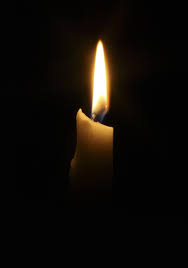Jerry Harkness Basketball Obituary – Death: Jerry Harkness, a basketball player for Loyola Chicago, passed away Tuesday morning, August 24. He was 81 years old. The cause of death has not been revealed.
Jerry Harkness, who led Loyola University Chicago’s integrated basketball team to the 1963 N.C.A.A. championship, along the way defeating a Mississippi State team that had previously refused to play against Black athletes, has died at 81.
— NYT Obituaries (@NYTObits) August 30, 2021
Jerry Harkness was born in the Bronx and is a member of several halls of fame, including the College Basketball Hall of Fame. Jackie Robinson inspired him to start the game of basketball. He ended up becoming a civil rights pioneer in his own right. He was Indianapolis’s first black sportscaster, worked with the United Way of Greater Indianapolis, and ran a sports shoe franchise.
3 Black starters was the max – but Jerry Harkness and his Loyola Chicago teammates broke that unwritten rule and beat an all-white Mississippi State team to win the NCAAs in 1963.
Drafted by the Knicks, he went on to become one of the original Pacers.
RIP.— New York Basketball (@NBA_NewYork) August 30, 2021
“Jerry Harkness, an original Pacer, passed away overnight.
He’s one of the many men who was given a second chance by the ABA, and made the most of it. He led Loyola of Chicago to the 1963 NCAA championship and was a first-team All-American, but only lasted five games with the Knicks. Wrote a letter to get a tryout with the Pacers four years later, and earned a spot on the roster at age 27.
He’s best known in basketball for hitting the longest game-winning shot in the history of professional basketball, an 88-footer in Dallas in November of ’67. He was forced into retirement in the second ABA season by injuries, but became an influential figure in Indianapolis in media and community affairs.
Simply an outstanding human being who will be missed by many.
He’s shown below, second from the right, at the ABA 50-year reunion with Wayne Pack, Billy Keller, Tom Thacker, and Freddie Lewis. Photo courtesy of Freddie’s daughter, Sherri.”
“Jerry Harkness has gone on to the game in the sky, way above the rim. Jerry lived a good 81 years and was one of the main reasons for creating the Real Harlem Basketball Players Facebook page.
Born in Harlem and attended PS 90, JHS 139 ( Frederick Douglass) and lived on 147th and 8th Avenue. Jerry went on to DeWitt Clinton HS where he stared in Basketball and Track .
Jerry received a scholarship to Loyola University Chicago where he lead the school to its one an only NCAA NATIONAL BASKETBALL CHAMPIONSHIP and earned MVP in the tournament.
Jerry went on to play for several Professional teams including the Indiana Pacers and the New York Knicks.
8 years ago Jerry came home and was finally honored by his Harlem community.
Show your love and remember the basketball community of Harlem must never forget their own.”
“Sorry to report that Jerry Harkness, a man of many accomplishments in and out of basketball, passed away this morning.
He was the captain of Loyola’s 1963 NCAA championship team, a first-team All-American, an original Pacer, hit the longest game-winning shot in basketball history (88 feet), and a crusader for all things good.
Out of basketball, was Indiana’s first Black television sportscaster, an executive with United Way and instrumental in the development of Black Expo and 100 Black Men. Was part of a group of men who spent weekends in prisons to mentor inmates. That kind of guy.
I was honored to lend a hand with his autobiography, “Connections,” and to spend many hours with him in conversation over the years. He’s got one of the best backstories of any sports figure I’ve known, but most of all was an exceptional human being.
The photo below shows him shaking hands with Mississippi State captain Joe Dan Gold before their NCAA tournament game in 1963. Mississippi State had to literally escape under the cover of darkness to play in the game because of an edict against playing integrated teams. This game was a breakthrough. Harkness, many years later, was a pallbearer at Gold’s funeral service. One of many examples of his ability to unite people.”
